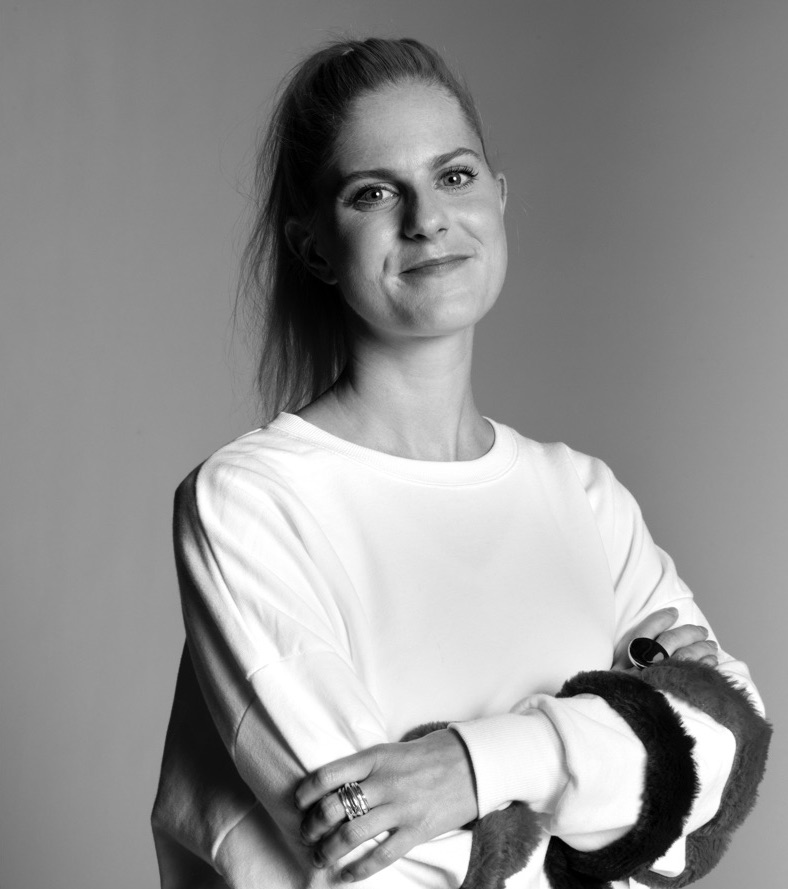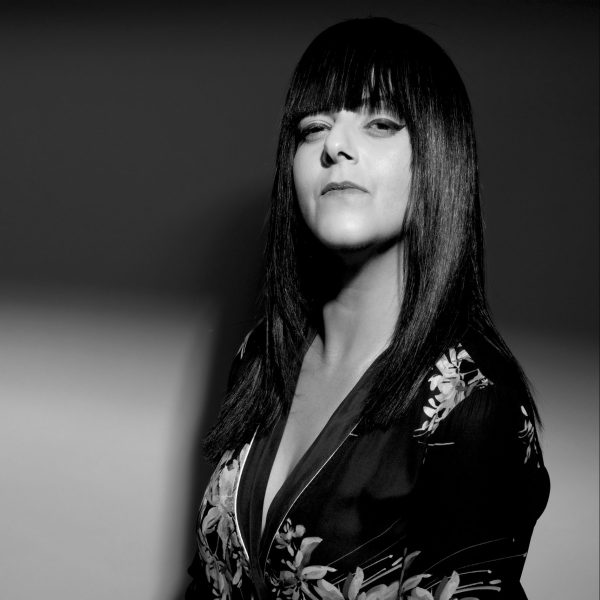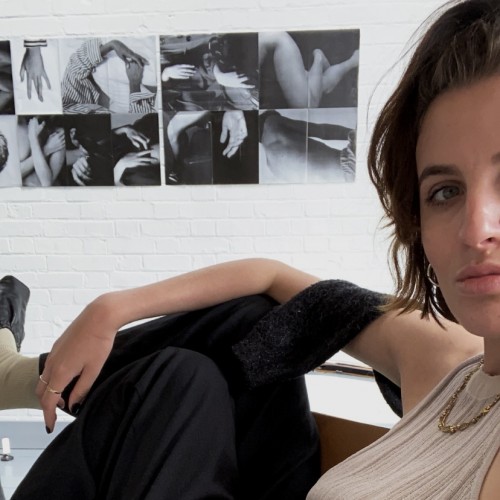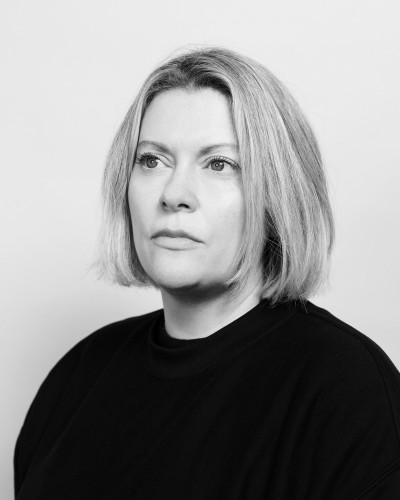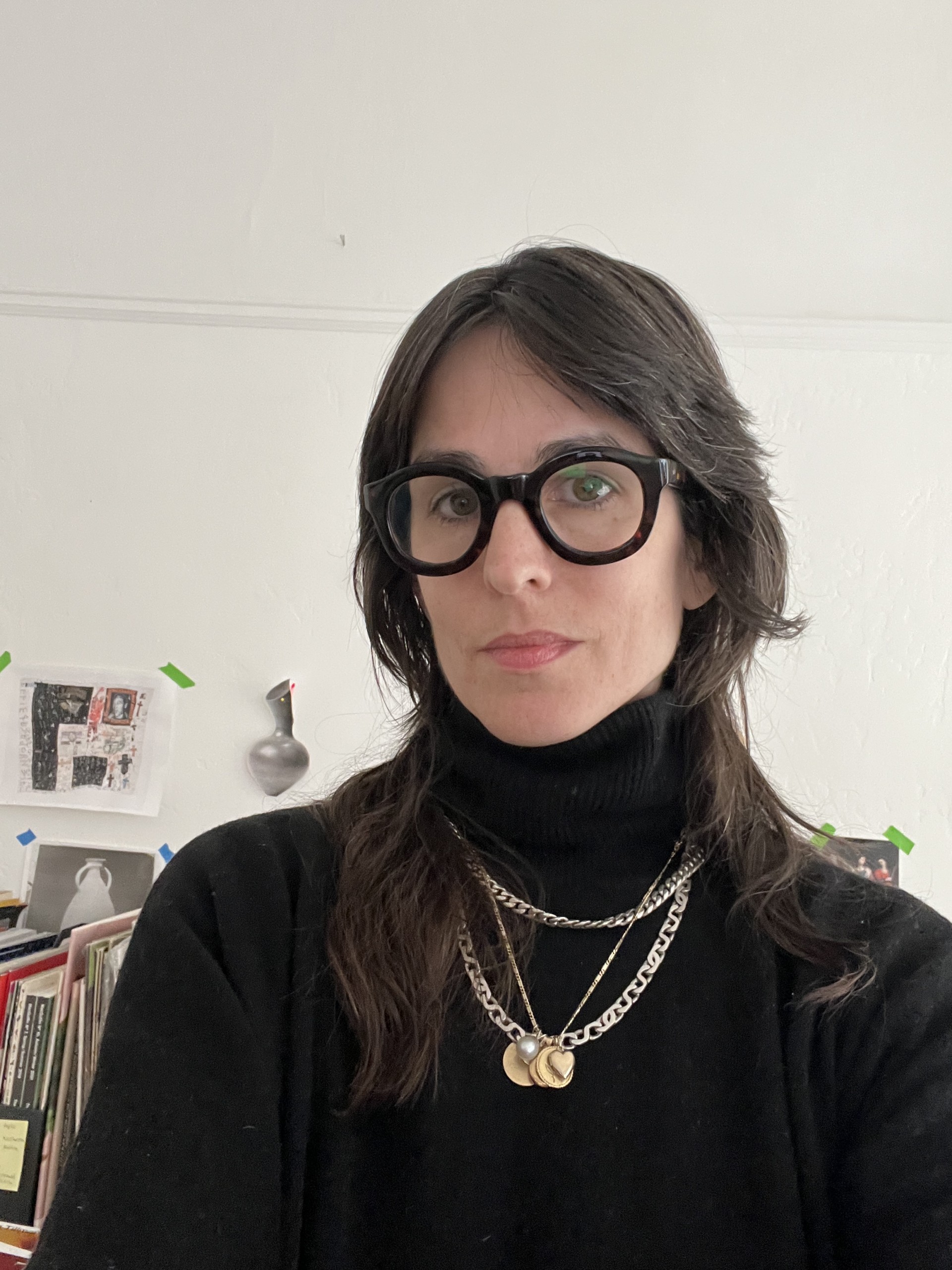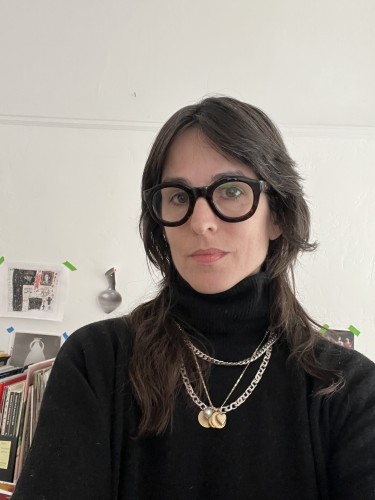Read Time 10 minutes
Marcin Ryczek’s minimalist-symbolism
Marcin Ryczek is a master of creating photographs of such precision and high levels of contrast [in light and shadow, and between colours and textures] that they could very well be mistaken for paintings. The United States of India is a brilliant example of this: your eyes need to adjust to the medium.
Ryczek takes what he has coined ‘minimalistic-symbolic’ photographs. His work has a stripped-back, slick quality. There is a real sense of space and air about his work. As Ryczek says:
It’s something more than just photography: it’s a way of perceiving the world, the silence.
In an exclusive interview with Darklight, Ryczek reveals the sentimental, almost meditative, background to his work. One of his most famed pieces: A Man Feeding Swans in the Snow, is particularly personal. The work, taken at a time of imbalance in his life helped to restore the photographer’s equilibrium. It is this sentimental foundation to his photographs, which has the power to move his audience across the globe. His works are ‘non-imposing’. The artist does not attempt to enforce interpretations on the viewer. Instead we are given the aforementioned ‘silence’ to create our own narrative.
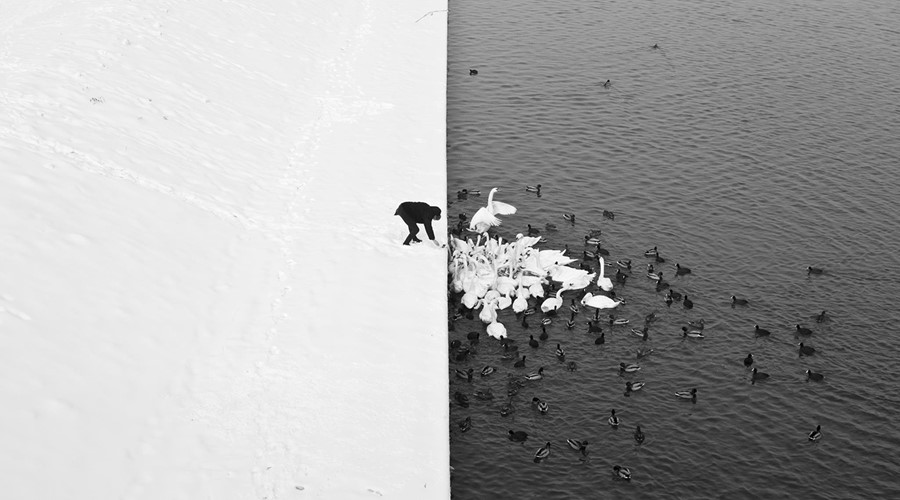
I wanted to take it for myself to emphasise the moment of my life I was in, to close a certain stage and start a new one.
The psychological input required of the viewer to interpret and empathise with an image seems particularly important to Ryczek. The artist believes that we ‘reflect what is happening in [our] souls’ in the act of interpretation. This psychological emphasis is also true of his view of the role of the artist. Ryczek believes ‘one has to work a lot on onseself [sic]‘ in order to follow one’s own artistic intuitions with freedom and confidence. Relating his work to his own philosophies about life and death is a reason given by the artist for his stark light contrast. ‘I am interested in what is invisible – like faith, death, and what happens after it … I think that man is still one of the most important motifs’.
In his interview with Darklight, Ryczek discusses the influence of movies, learning aesthetic principles from art history only to break them, and how ‘many small miracles’ do happen.
How did you come to photography?
When I’m joking, I’m saying that my adventure began when I was four or five years old. In the 80s my dad managed to get a Polaroid. Unfortunately, he didn’t manage to get film, as it was very difficult or very expensive to buy then in Pewex. So my parents gave me this black, big, useless camera to play with it. I used to go out and take pictures, imaginary ones. I still remember the sound of the pressed shutter. Psychologists say that the years leading up to age six are very important for human development. So maybe already then, this Polaroid without film instilled my love of photography.
Later, at the age of 20, I combined photography with travel. I was then fascinated––for a very long time––by portrait photography. How body language, facial expressions, features and the glow in the eyes of sitters reflect what is happening in their souls. It is an interesting kind of photography, requiring psychological skills to approach a person in order to extract the truth from them. With this kind of photography, one has to work a lot on oneself, and have a lot of empathy in order to make the sitter have trust.
However, the first minimalistic-symbolic photograph––because that’s what I’m doing now––was The United States of India, which I took 11 years ago in India. The picture of a meditating Sadhu on the red and white stairs leading to the Ganges that looks like the United States flag opened my eyes a little bit to what I want to do. Photography which is ambiguous, metaphorical and which refers to many symbols; simultaneously in its form, as to geometry and minimalism. This picture was followed by the photographs Emigration – The United States of Earth, which together with the picture The United States of India form a triptych.

How would you best describe your compositional style?
I call my photography minimalistic-symbolic, although that’s a very narrow term. It’s interesting to me that I am invited to festivals of street, travel, artistic photography … I somehow avoid being assigned to one particular field.
The combination of minimalism, symbolism and subject that I want to convey––not directly but metaphorically––is what my photography is about. I admit that combining these elements is not easy, but I like challenges. At the same time, it’s something more than just photography: it’s a way of perceiving the world, the silence.
minimalism
minimalism
minimalism
I’m particularly interested in the huge contrasts between light and dark in your monochrome pieces. Can you tell me about this artistic decision? Is light and dark a particularly important theme to you?
The contrast between light and dark is important in my pictures, but each one has its own story. For example the photo A Man Feeding Swans in the Snow, this is a very personal and real photograph. I took it at a time when, after the sum of difficult life situations and positive ones happened to me, I felt calm and balanced. I had many thoughts that sometimes seemingly negative experiences can lead us to something good. I wanted to illustrate this and express what I felt with a photograph. I was looking for this motif of balance in Cracow, where I currently live, walking daily on the Vistula River. And I managed to notice this place, and then the situation that completed the frame.
This picture was not taken to achieve success or appeal to the taste of others. I wanted to take it for myself. To metaphorically emphasize the moment of my life I was in; to close a certain chapter and begin a new one. I think that this truth can be felt in the photo, and thus, it appeals to the sensitivity of people from different corners of the world. It’s amazing that whilst traveling in different countries like Taiwan or Japan, new people tell me that they know this picture. That is very nice.
The picture Out of the Gray can be interpreted as a way of refugees, emigrants who flee from war-affected places, from poverty, such as Syria. At the same time, it can be a picture of breaking through certain borders, barriers, weaknesses of self.
Sometimes brightness can also be a reflection on death, on the transition to an unknown place. Often people after clinical death say that they experienced brightness or light in a tunnel, such as in the photo Transition or Unknown. Darkness and brightness can also be interpreted very simply, as a fight between good and evil, as for example in the case of Battle.
But, of course, for me and for those who look at my photographs, they may mean something completely different. And that’s what I want them to be – ambiguous and non-imposing of one obvious interpretation.
Do you have a preference for colour or monochrome photography? Do you think they serve different purposes?
In photography, I try to be free and listen to my intuition and emotions. When I go somewhere, I try to feel the place, get to know people, culture and tradition. Later, through photography, I try to delve into these places. A photograph depends on the specifics of the place, my mood; what I want to convey. In places like India or Taiwan, it’s more difficult to take black and white photos, because the sun, vegetation and variety of colours attune to see the world in colour. Although there I also managed to take black and white photos like Forest, Battle or Running.
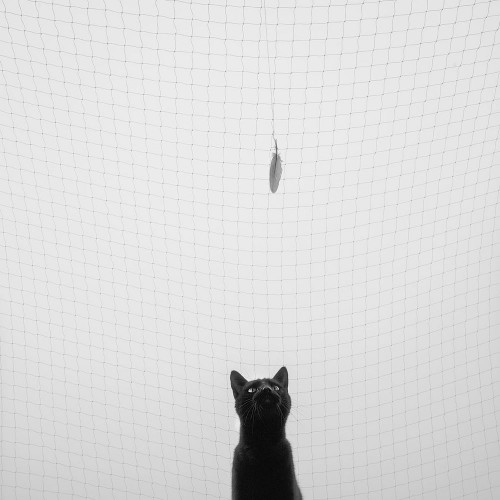
Do you feel that your works are addressing a topic, theme, or problem? What is the driving force behind your work?
I think that man is still one of the most important motifs, although sometimes it does not appear in pictures. In many of my works, I refer to the theme of harmony in life, in which I touch the relationship between man and the world, man and nature, man and God … Photographs with which I express what touches me, what I feel, what I have read or seen. In which I am interested in what is invisible – like faith, death, and what happens after it and how people understand it.
Recently, I have also started to deal with the subject of disharmony. An example of such a picture is the photograph Humanity/Digitality – Sunset in Santorini, which is a reflection on our perception of the world and the beauty of nature. The photography eloquently illustrates man’s attitude to progressing technology and the digitization of life. The frame was captured on the Greek island of Santorini, known for its white-blue houses hanging on cliffs and the most beautiful sunsets. It was inspired by the crowd of tourists observing this phenomenon through cameras, telephones, taking selfies … And no one directly contemplated the beauty of this fleeting moment.
What [if any] would you say are your art historical influences?
I’m trying to find my own path. I’m interested in the broadly understood art that affects me. But I have never tried to copy or be strongly inspired by someone’s work. Of course, through painting, for example, we can learn a lot, even the rules of composition. By learning these principles, you can later consciously break them.
Emotionally, I was most influenced by films and music. When I was younger, my sensitivity and approach to art were shaped by the films of Krzysztof Kieślowski and David Lynch, among others. Their symbolism, ambiguity, metaphysics, sense of mystery; this is what moves me most. Now, during the period spent locked indoors due to the pandemic, I watched a lot of beautiful films by Ki-duk Kim and Tarkovsky, among others. But in photography, I try to do it in my own way.
Where do you get your inspiration from for shoots?
As I mentioned earlier, I am inspired by man. Our complexity, choices; the crossing of barriers. Spirituality is extremely fascinating to me. I think that, in a seemingly ordinary world, many small miracles happen, but you have to stop and live more peacefully in harmony with yourself to notice them.
Photography helps me to see the beauty of the world. In photography, I also refer to psychology: to knowing oneself. To pursue one’s dreams, to fight the barriers we have within ourselves. Trying to take a metaphorical look at these topics is a challenge for me. Photography is also a kind of meditation when I usually wait a few hours for a given situation in one place. I think I’m inspired by beauty, which is hidden in seemingly ordinary places and situations.
END
subscribe for the latest artist interviews,
historical heronies, or images that made me.
what are you in the mood for?





